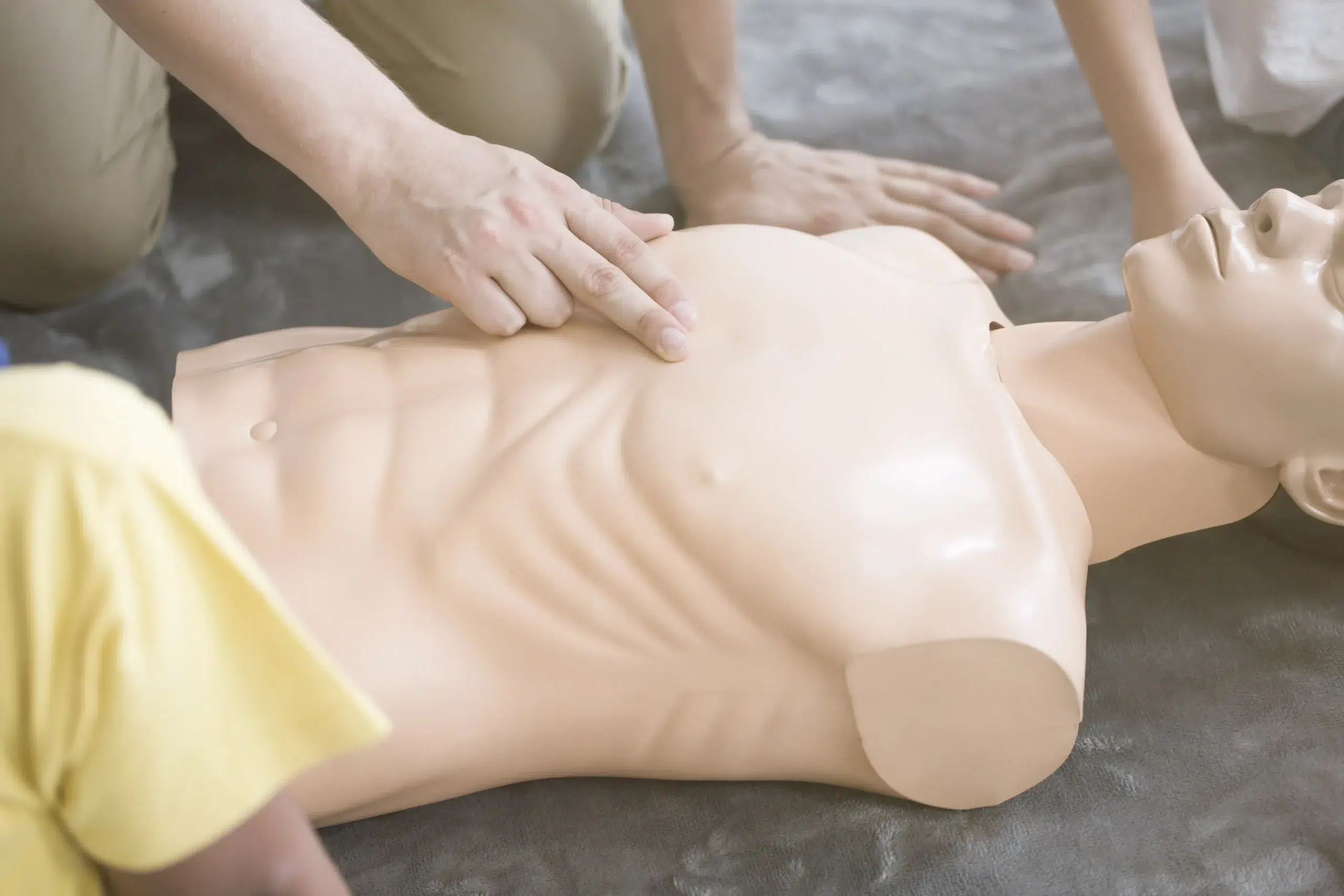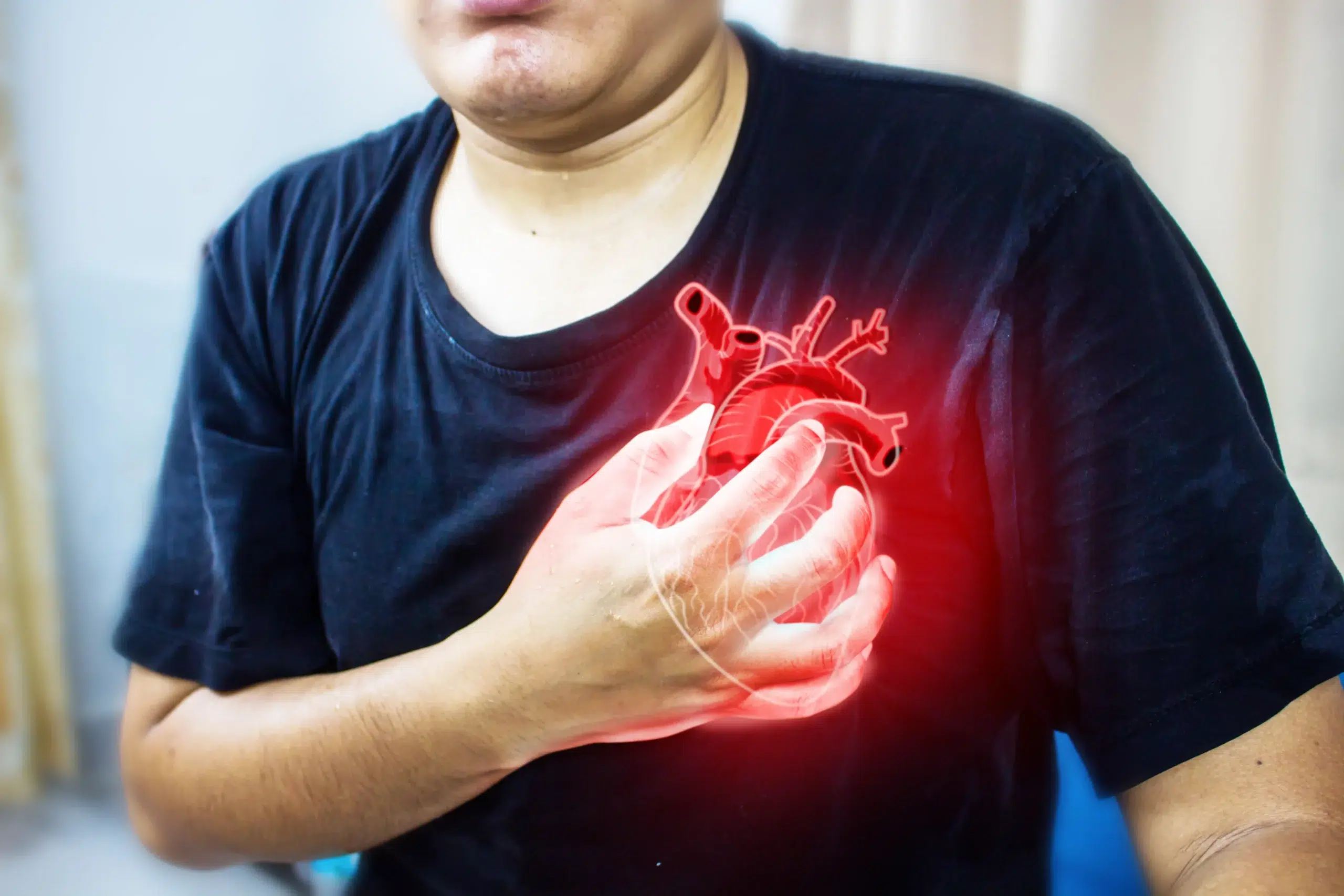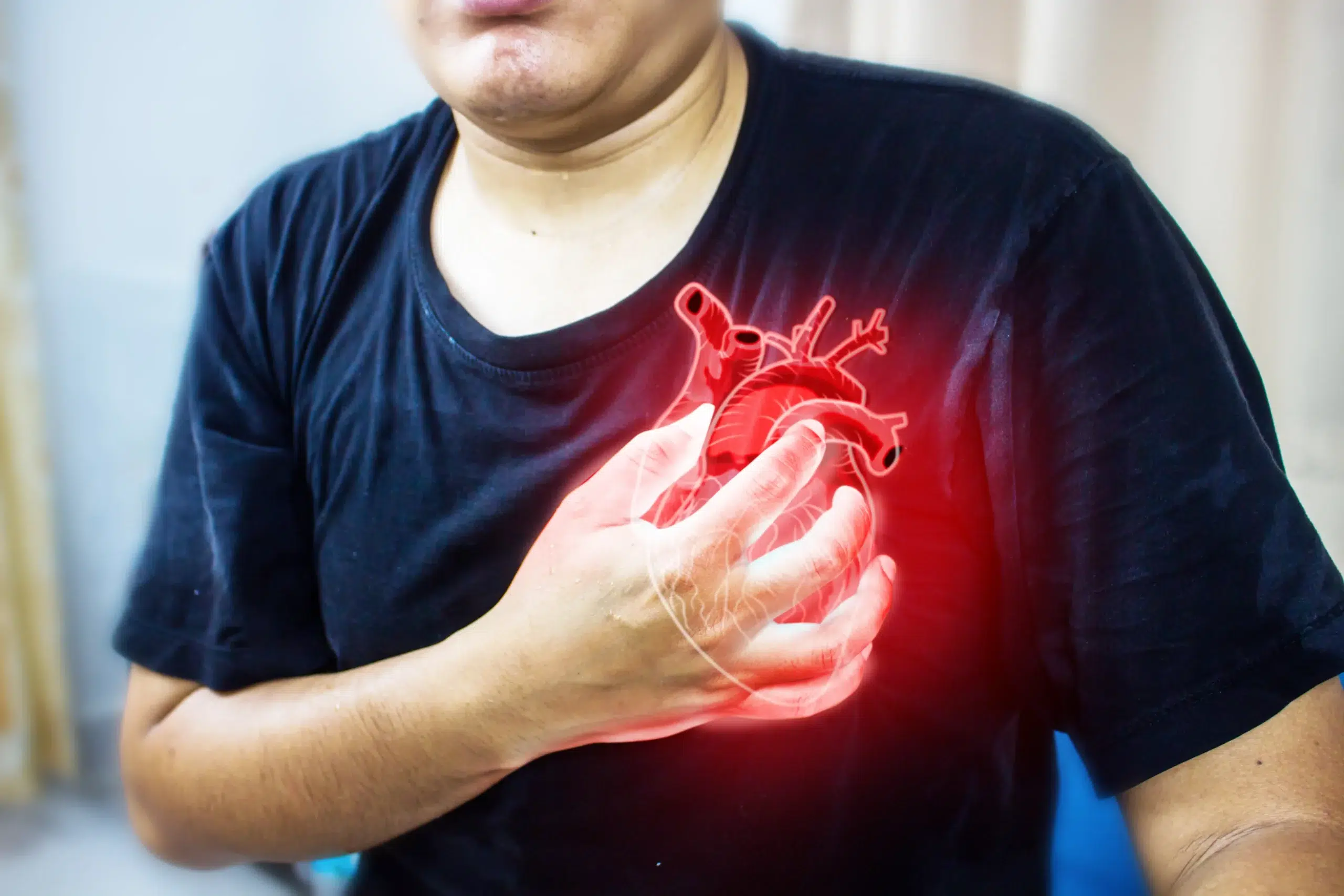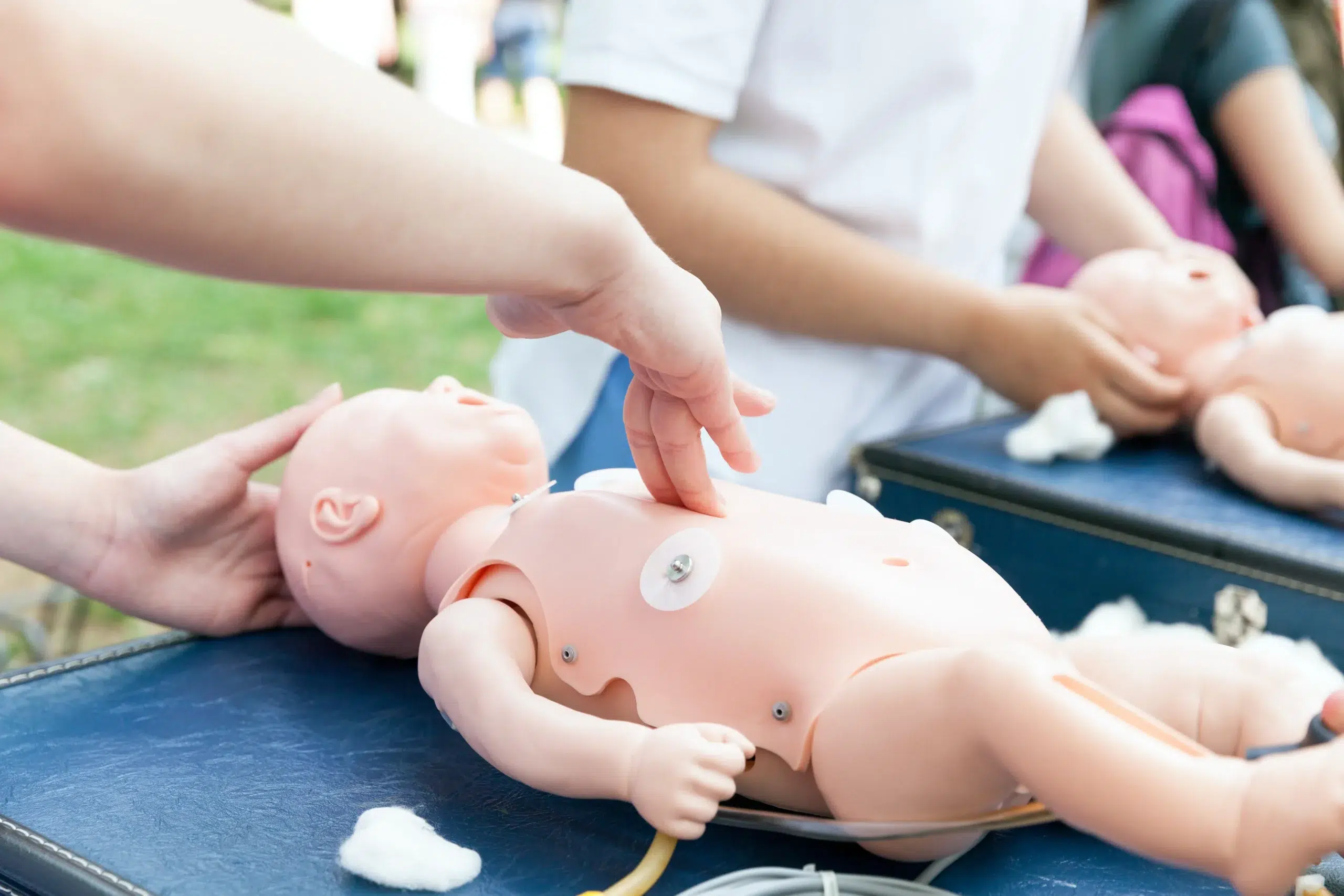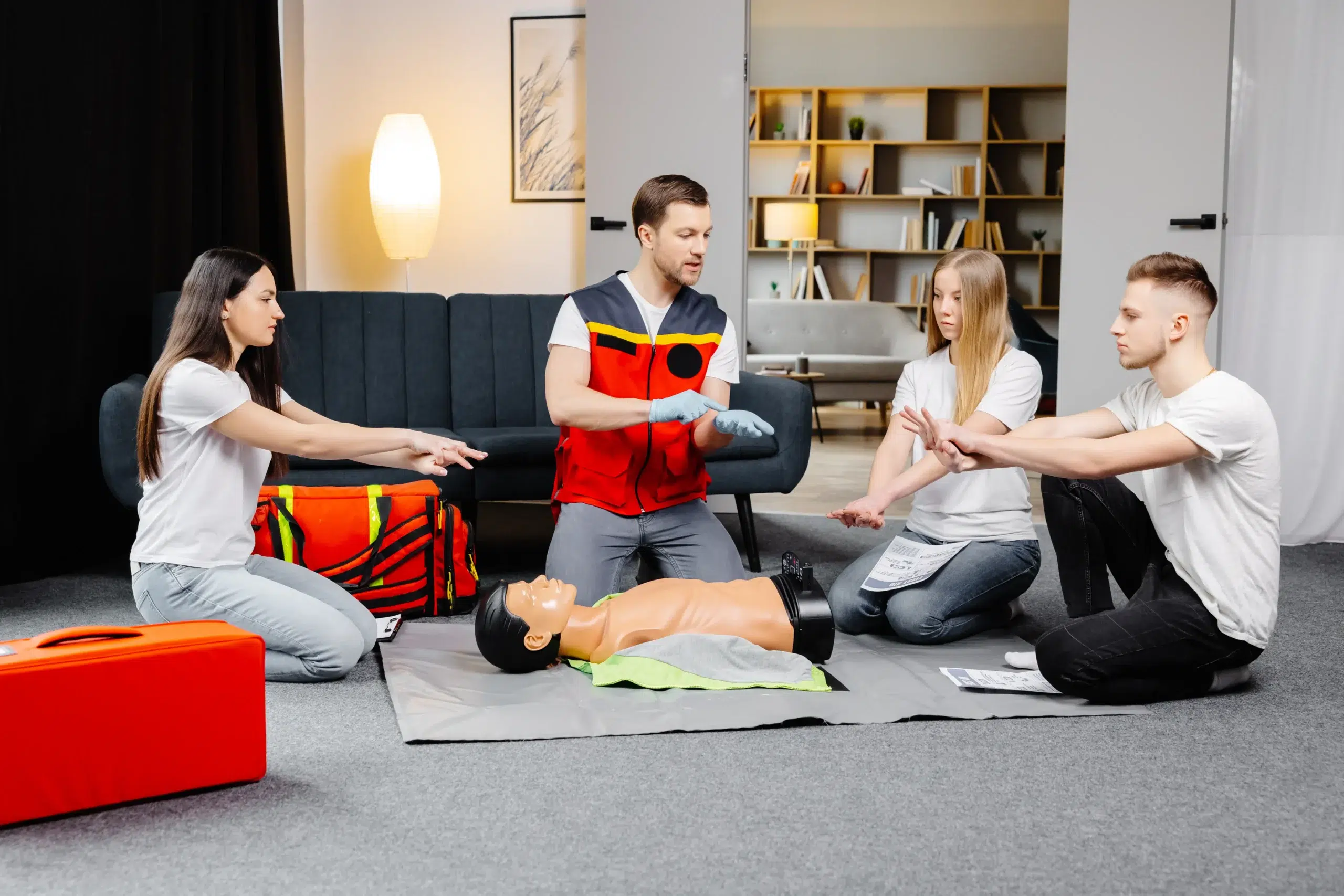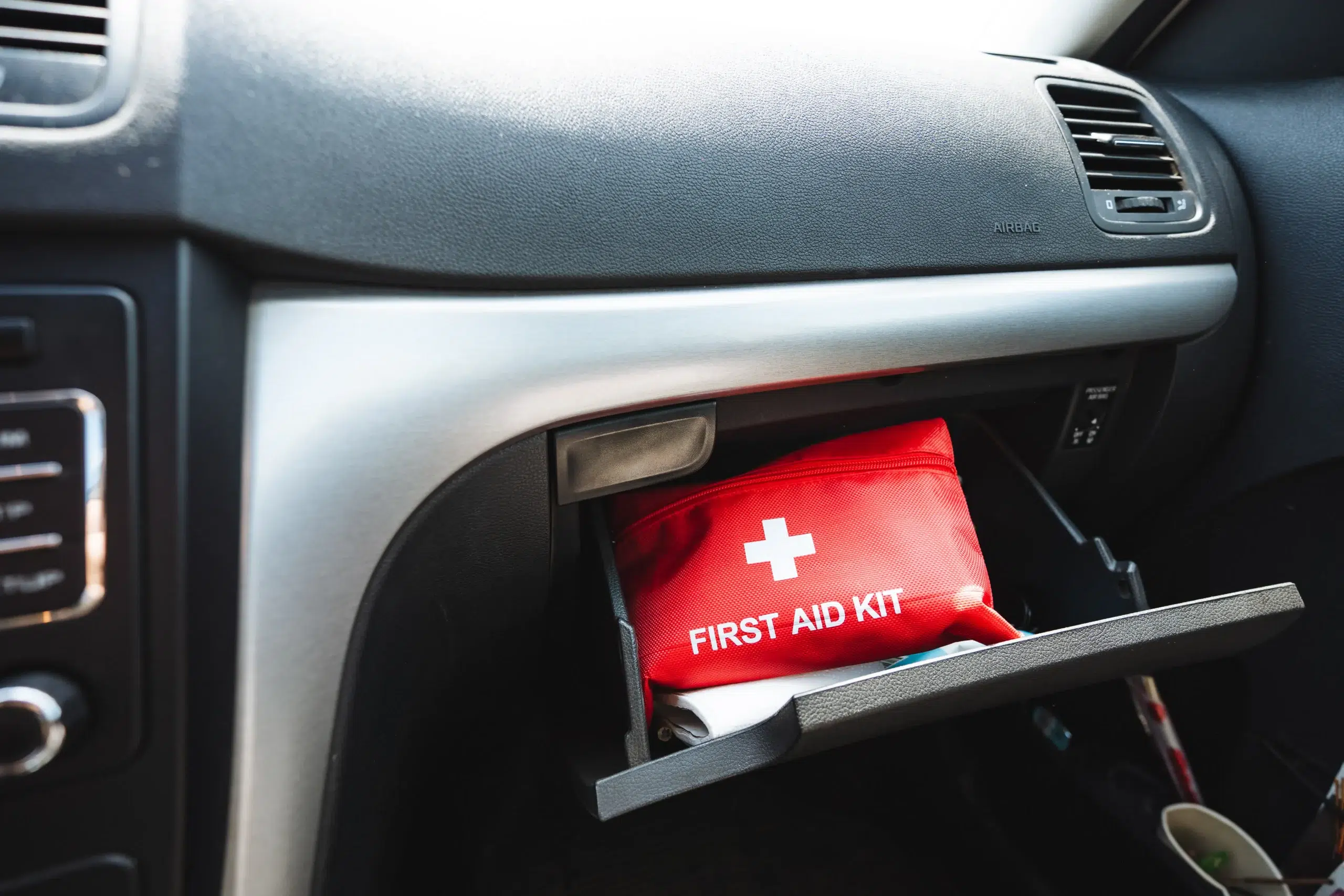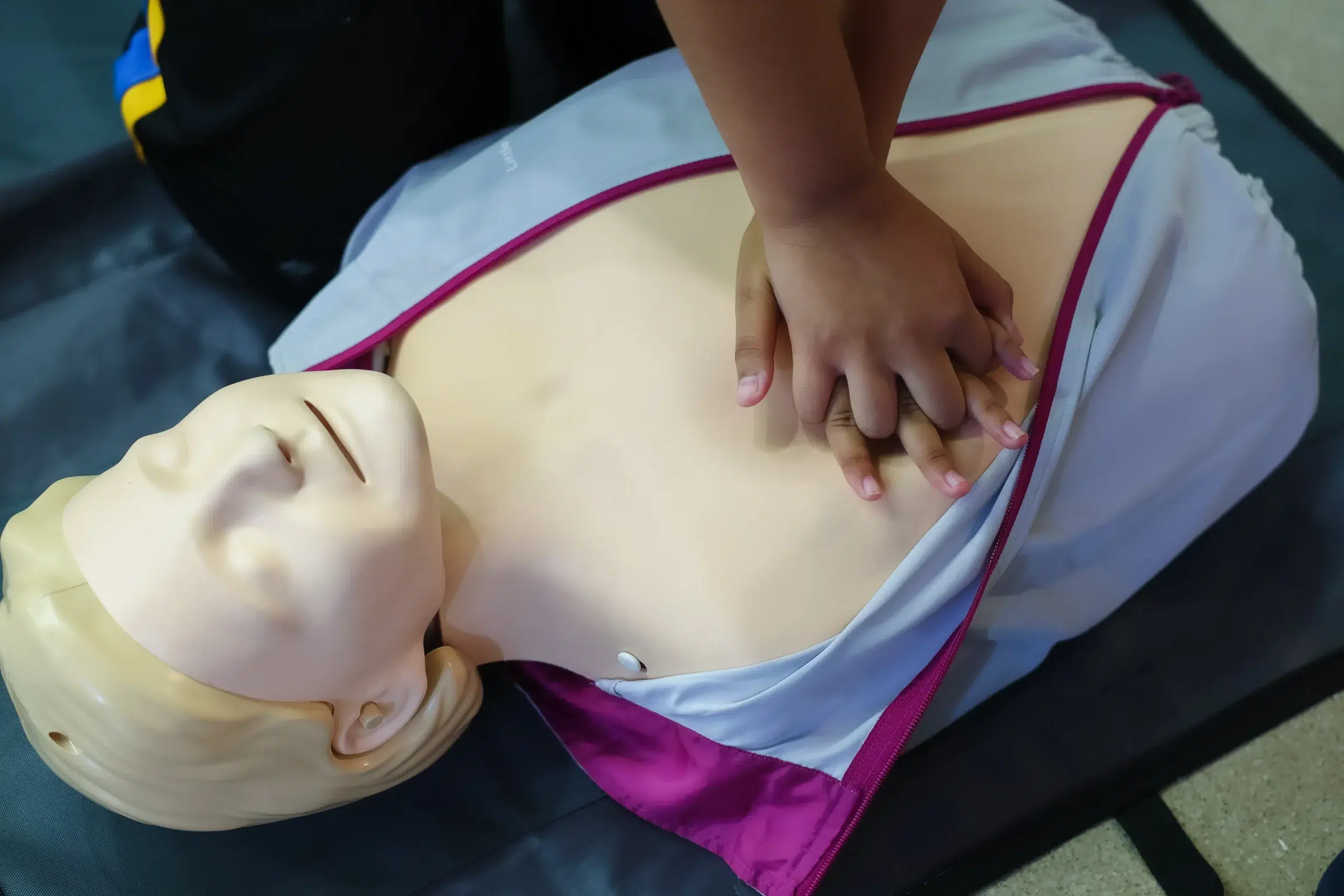Emergencies can happen anytime, anywhere. Being equipped with the skills to respond effectively can make all the difference. CPR certification provides you with the confidence and ability to act in critical situations, potentially saving a life. This guide is designed to answer all your questions about CPR certification. We’ll cover how to find “CPR certification near me,” the different types of courses available, and what to expect during your training. We’ll also discuss the costs, the renewal process, and the various benefits of being CPR certified. Whether you’re a healthcare professional, a parent, a teacher, or simply someone who wants to be prepared, this guide will help you navigate the world of CPR training and choose the right course for your needs.
Key Takeaways
- CPR certification empowers you to act: Equipping yourself with CPR training provides the confidence and skills to respond effectively in medical emergencies, bridging the gap until professional help arrives. Explore various courses, from basic to advanced certifications, to match your specific needs.
- Select a reputable training provider: Seek out established organizations like the American Heart Association or American Red Cross for your CPR certification. Consider factors such as accreditation, instructor experience, and reviews to ensure you receive top-notch training.
- Maintain your CPR skills: CPR certification requires periodic renewal. Stay current with the latest guidelines and refresh your skills regularly to remain prepared and confident in your ability to provide assistance when it matters most.
What is CPR Certification?
CPR certification equips you with the skills to perform cardiopulmonary resuscitation (CPR) effectively. It’s a structured program that teaches you the techniques of chest compressions and rescue breathing, essential for responding to cardiac arrest and other life-threatening emergencies. While some believe CPR is simple, having formal CPR training ensures you can confidently and correctly administer these life-saving techniques. These skills are crucial for responding effectively during those critical first few minutes before professional help arrives.
CPR certification isn’t just for healthcare professionals; it’s a valuable skill for everyone. From childcare providers and parents to teachers and coaches, knowing CPR empowers you to respond effectively in critical situations. Pediatric CPR and first aid training are especially relevant for those working with children, equipping them to handle emergencies involving infants and toddlers. These courses often incorporate training in using an automated external defibrillator (AED), further enhancing your ability to provide immediate care. Think of CPR certification as a vital tool in your preparedness kit. It’s about being equipped to make a real difference when it matters most. So, whether you’re looking to fulfill job requirements or simply gain peace of mind, CPR certification is a worthwhile investment.
CPR Certification Courses
Choosing the right CPR certification course depends on your specific needs and goals. Whether you’re a healthcare professional, a childcare provider, or simply someone who wants to be prepared for emergencies, understanding the different types of CPR courses available is essential. Roseville CPR classes offer a range of options to suit every need.
Basic Life Support (BLS)
The Basic Life Support (BLS) course is designed for healthcare providers, first responders, and other professionals in the medical field. It covers a wider range of skills than Heartsaver CPR, including high-quality CPR for adults, children, and infants; the use of an AED; effective rescue breathing techniques; and relief of choking. BLS also emphasizes teamwork and the importance of early recognition and response to life-threatening emergencies like cardiac arrest. This comprehensive training ensures healthcare professionals are well-equipped to handle critical situations and provide effective patient care. Roseville CPR Classes offers group discounts for BLS certification, making it a cost-effective choice for healthcare teams.
Heartsaver CPR
Heartsaver CPR focuses on teaching essential, life-saving skills to anyone who wants to be prepared for an emergency. This course covers CPR and AED use for adults, children, and infants, making it ideal for community members, teachers, coaches, parents, and other individuals who may need to respond to a cardiac emergency. While not as in-depth as BLS, Heartsaver CPR provides foundational knowledge and skills that can make a real difference. Check out Roseville CPR Classes’ low price guarantee to ensure you’re getting the best value for your training.
Pediatric CPR
For those working with children, the Heartsaver Pediatric First Aid CPR AED course offers specialized training. This course covers pediatric CPR and AED use, and essential first aid for common childhood injuries and illnesses. It’s specifically designed for childcare providers, teachers, camp counselors, and anyone responsible for the well-being of infants and children. Learning how to respond effectively to pediatric emergencies can provide invaluable peace of mind. Roseville CPR Classes is affiliated with Safety Training Seminars, ensuring high-quality instruction and certification.
Find Reputable CPR Certification Providers
Choosing the right CPR certification provider is crucial for receiving high-quality training and a valid credential. Here’s what to look for:
Trusted Organizations
Start your search by looking at established organizations known for their comprehensive programs. The American Heart Association (AHA) is a gold standard in CPR training and certification. They set the guidelines for CPR and emergency cardiovascular care, so aligning with an AHA-affiliated training center ensures you’re learning the most up-to-date practices. Verifying the authenticity of certifications, like AHA eCards, is vital. For additional peace of mind, you can also check resources like the National CPR Center for more information on verifying certifications.
Evaluate Reviews and Ratings
Before signing up for a course, check out what past participants have to say. Reading reviews and ratings can give you valuable insights into the quality of instruction, course materials, and overall experience. Look for providers with consistently positive feedback, reflecting their commitment to student satisfaction. A high satisfaction rating, like the one boasted by the American CPR Care Association, can give you confidence in the training you’ll receive.
Verify Accreditation and Instructor Qualifications
Accreditation matters. Ensure your chosen provider is accredited by a recognized organization. The National CPR Foundation™ (NCPRF) offers accredited certification coursework that aligns with the guidelines of the AHA and other leading organizations like the International Liaison Committee on Resuscitation (ILCOR) and the Occupational Safety and Health Administration (OSHA). This ensures the training meets industry standards. It’s also important to confirm the qualifications of the instructors. They should be certified and experienced in teaching CPR and first aid. Additionally, using tools like the eCPRVerify Electronic Verification System (EVS) can help employers and training centers confirm certification compliance and validity. This extra step ensures your certification is recognized and up-to-date.
CPR Certification Costs & Value
Getting CPR certified is an investment in your skills and ability to help in a crisis. Let’s break down the costs associated with CPR training and explore the incredible value it provides.
Average Price Ranges
CPR certification costs vary based on several factors, including the type of course, the training provider, and your location. Basic CPR and first aid certification can range from around $45 to $80. More advanced courses, such as BLS for healthcare providers, typically fall into a higher price range. For specific pricing, it’s always best to check with various providers, including Roseville CPR Classes. Their low-price guarantee ensures you’re getting the best possible value.
Group Rates and Discounts
If you’re training a group of people, such as colleagues or a community organization, explore group discounts. Many CPR training providers offer reduced rates for larger groups, making it a cost-effective way to get everyone certified. Roseville CPR Classes has excellent group discounts, so inquire about options for your team. This can be a smart way to manage costs while equipping your group with life-saving skills.
Financial Assistance
While cost is a factor, CPR training is an invaluable skill. The ability to respond effectively in a medical emergency is priceless. If cost is a concern, don’t let that be a barrier. Reach out to various CPR training providers in your area and ask about potential financial assistance programs or payment plans. The goal is to make this essential training accessible to everyone. CPR and first aid training empowers individuals to make a real difference, and there are resources available to help you get certified.
Course Duration and Formats
CPR and first-aid training come in several formats. Understanding the differences will help you choose the best option for your schedule and learning style.
In-Person Training
In-person CPR training involves hands-on practice and skills demonstrations. You’ll work directly with a certified instructor who can give you immediate feedback. In-person classes from providers like the Red Cross typically lead to a two-year certification that meets OSHA requirements, ensuring you’re prepared for real-life emergencies. This format is ideal for people who learn best in a traditional classroom setting and value direct interaction.
Online Courses
Online CPR courses offer flexibility and convenience, allowing you to learn at your own pace. This format is great for people with busy schedules or who prefer self-directed learning. However, it’s important to note that online-only classes do not provide an OSHA-compliant certification because they lack the hands-on skills demonstration required. While convenient for initial learning, they may require supplemental in-person training for official certification. Check with your certifying body to confirm their requirements.
Blended Learning
Blended learning combines online learning with in-person skills sessions. As described by the American Heart Association, blended learning lets you complete part of the course online at your own pace, followed by a hands-on session to practice your skills and receive certification. This format offers a balance of flexibility and practical experience, making it a popular choice.
What to Expect in Your CPR Course
So, you’ve decided to get CPR certified—that’s great! Knowing what to expect will help you feel prepared and confident going into your training. Whether you’re taking a CPR course for personal growth or to meet job requirements, understanding the curriculum and the hands-on components will make your learning experience more effective.
Course Content Overview
CPR courses cover the essential life-saving techniques needed to respond to cardiac arrest and breathing emergencies. You’ll learn the core components of CPR—chest compressions and rescue breaths—and how to recognize when someone needs CPR. Importantly, CPR training is designed to be accessible to everyone, regardless of medical background. You’ll find courses tailored to various needs, including CPR for adults, children, and infants. For example, the Heartsaver Pediatric First Aid CPR AED course is designed for people who work with children. These courses often include instruction on handling illnesses and injuries in a child or infant until professional help arrives. The American Red Cross offers various CPR training courses, with options for in-person, online, or blended learning formats.
Hands-On Practice
Hands-on practice is crucial for any CPR class. In-person training gives you the chance to practice these skills in a safe environment with certified instructors. You’ll work with training mannequins to learn the correct hand placement, depth, and rate for compressions. This hands-on experience helps build muscle memory and confidence, both essential for performing CPR effectively in real-life emergencies. In-person CPR classes usually lead to a two-year certification that meets OSHA requirements, unlike online-only courses. If you choose blended learning, you’ll complete online coursework and then attend an in-person skills session, often practicing with an instructor or a Voice Assisted Manikin (VAM) for personalized feedback. The American Heart Association provides further details on their eLearning and blended learning courses. This mix of online learning and hands-on practice offers a flexible and thorough approach to CPR training.
Renew Your CPR Certification
So, you’ve already taken the leap and gotten your CPR certification—fantastic! But like most certifications, CPR training requires periodic renewals. This section covers everything you need to know about keeping your skills sharp and your certification current.
Validity Periods
CPR certifications are typically valid for two years. Knowing your expiration date is key to staying prepared. Keep your certification card handy and mark your calendar to give yourself plenty of time to recertify before it lapses.
Recertification Process
The good news is that renewing is straightforward. Recertification courses are readily available, often shorter than the initial certification course, and designed to refresh your knowledge and skills. These courses, whether you choose in-person training or a blended learning format, usually include a skills test to ensure you’re still proficient in performing CPR. This hands-on evaluation is essential for building confidence and maintaining muscle memory for those crucial moments when CPR might be needed. Roseville CPR Classes offers a variety of renewal courses to fit your schedule and learning preferences. Check out our discount group class options for an even more affordable way to recertify.
Stay Updated on Guidelines
CPR guidelines and best practices can evolve, so staying informed is crucial for providing the most effective care. Organizations like the American Red Cross and the American Heart Association regularly update their guidelines based on the latest scientific research. Make sure your recertification course aligns with these current standards. Also, remember that while online-only CPR courses are a great way to learn the basics, they typically don’t fulfill requirements for workplace certification, which usually mandates hands-on skills training. Check with your employer or regulatory body to confirm the specific requirements for your profession.
Choose the Right CPR Course
Finding the right CPR course involves understanding your needs, your goals, and sometimes, even state regulations. Let’s break down how to navigate these factors.
Assess Your Requirements
First, think about why you’re getting CPR certified. Is it a job requirement, a volunteer position, or are you preparing for potential emergencies? CPR certification isn’t just for healthcare professionals—anyone can learn this life-saving skill. Parents, teachers, coaches, and even babysitters can benefit from knowing CPR. Don’t let misconceptions hold you back. Learning CPR empowers you to respond effectively in critical situations and potentially save a life.
Match Courses to Your Goals
Once you know why you need CPR certification, you can choose a course that aligns with your goals. If you’re in the healthcare field, you’ll likely need a course like Basic Life Support (BLS) certification through the American Heart Association. This course covers more advanced techniques than a basic CPR course. However, if you’re learning CPR for personal preparedness, a Heartsaver CPR course might be a better fit. These courses focus on the fundamentals of CPR and are perfect for anyone wanting to be prepared for emergencies. Remember, even without extensive medical training, you can learn and effectively perform CPR with practice. Check out our group discounts if you’re looking to train with friends or colleagues.
Consider State Regulations
Finally, check if your state or profession has specific requirements for CPR certification. Some states or licensing boards may require healthcare providers to obtain certification from a particular organization, such as the American Heart Association or the American Red Cross. While convenient, online-only CPR certifications may not meet all requirements, especially in regulated fields like healthcare, so it’s always best to double-check. Make sure the course you choose meets any necessary state regulations and professional standards to ensure your certification is valid and recognized. Roseville CPR classes offer the RQI program for healthcare professionals needing to renew their certifications. We also have a low price guarantee, so you can be confident you’re getting the best value for your training.
Top CPR Certification Providers in Roseville, CA
Finding the right CPR certification course can feel overwhelming, but knowing where to look makes all the difference. This section highlights some reputable CPR training providers in Roseville, CA, including options for everyone from concerned citizens to healthcare professionals.
Roseville CPR Classes
Roseville CPR Classes offers a wide range of courses, including BLS, ACLS, PALS, and First Aid. As an affiliate of Safety Training Seminars, an AHA Training Center, they maintain high standards for certification and customer service. They also offer RQI courses for healthcare providers needing to renew their certifications and group discounts to make training more accessible. Serving Roseville, Sacramento, and Rocklin, they’re committed to community safety. Check out their low price guarantee.
American Red Cross
The American Red Cross is a trusted name in emergency preparedness, offering various CPR certification courses. With both in-person and online options, they provide flexibility for different learning styles. Their programs cover essential life-saving skills and adhere to the latest guidelines, empowering individuals to respond confidently in emergencies.
American Heart Association
The American Heart Association (AHA) is another leading provider of CPR training. They offer several courses, including Heartsaver CPR for the general public and Basic Life Support (BLS) for healthcare professionals. This article clarifies the distinctions between Heartsaver CPR and BLS, which both combine learning with hands-on practice to build skills and confidence.
Safety Training Seminars
Safety Training Seminars partners with the AHA to deliver high-quality CPR, BLS, and ACLS training in Roseville and surrounding areas. They emphasize hands-on learning and offer convenient group discounts, making them a practical choice for businesses and community groups. Learn more about their programs on their Manteca CPR Classes page.
Benefits of CPR Certification
Getting CPR certified isn’t just about checking a box; it’s about equipping yourself with a life-saving skill that can make a real difference. Whether you’re aiming for personal growth, professional development, or simply want to contribute to your community, CPR certification offers several valuable benefits.
Personal Preparedness
CPR certification empowers you to respond effectively in emergencies. Imagine you’re at a family gathering when someone suddenly collapses. Instead of feeling helpless, you can step in with the confidence and skills to provide immediate assistance, potentially bridging the gap until professional help arrives. As the experts at By Grace CPR Compliance explain, CPR training equips individuals to make a life-or-death difference. The American Red Cross also emphasizes the importance of CPR training and its potential to save lives. Knowing CPR can transform you from a bystander into a first responder.
Professional Advantages
In many fields, CPR certification is a sought-after asset. It’s often a job requirement for healthcare providers, educators, and childcare workers. Even outside of these professions, having CPR certification on your resume demonstrates a commitment to safety and preparedness, which can give you an edge. MyCPR NOW discusses how essential CPR training is for various professions. Health Education Pro notes that employers value candidates with this certification, as it signals that you’re someone who takes initiative and can handle critical situations.
Community Impact
Learning CPR means you’re not just prepared for emergencies within your own circle; you become a valuable asset to your entire community. Bystander CPR plays a crucial role in improving survival rates for cardiac arrest victims. The CPR and BLS Training Institute explains how bystander CPR significantly increases these survival rates. With over half a million cardiac arrests occurring annually in the US, according to the American Red Cross, the more people in a community trained in CPR, the better the chances of positive outcomes. Your skills can quite literally be the difference between life and death for someone in your community.
Related Articles
- CPR Certification in Roseville: Your Guide – Roseville CPR Classes
- CPR Courses in Roseville: Find the Right One for You – Roseville CPR Classes
- CPR Training in Sacramento: Your Guide – Roseville CPR Classes
- BLS Certification in Roseville: The Ultimate Guide – Roseville CPR Classes
- ACLS Renewal Roseville: Your Complete Guide – Roseville CPR Classes
Frequently Asked Questions
What’s the difference between BLS and Heartsaver CPR? BLS (Basic Life Support) is a more comprehensive course designed for healthcare professionals and first responders, covering a broader range of skills like team-based resuscitation and advanced airway management. Heartsaver CPR focuses on essential life-saving techniques for the general public, including CPR and AED use. The choice depends on your professional needs and goals.
How do I choose a reputable CPR training provider? Look for providers affiliated with recognized organizations like the American Heart Association or the American Red Cross. Check reviews and ratings from past participants, and verify instructor qualifications and accreditation to ensure you receive high-quality training and a valid certification.
How much does CPR certification cost, and are there any discounts? Costs vary depending on the course type and provider, but generally range from $45 to $80 for basic CPR and first aid. Many providers offer group discounts, so inquire about those if you’re training with others. Some providers may also offer financial assistance, so don’t hesitate to ask.
What can I expect during a CPR course? Expect a mix of instruction and hands-on practice. You’ll learn the core techniques of CPR, including chest compressions and rescue breaths, and how to recognize when CPR is needed. You’ll also practice on mannequins to develop muscle memory and confidence.
How often do I need to renew my CPR certification, and what’s involved? Most CPR certifications are valid for two years. Renewal courses are shorter than initial certification and focus on refreshing your skills and knowledge. They typically include a skills test to ensure you remain proficient. Stay updated on any changes in CPR guidelines to maintain the most current skills.


